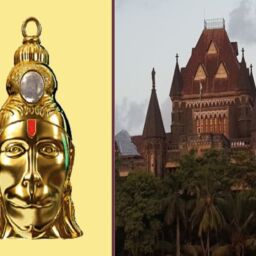INTRODUCTION
In these episodes and the idea of the present age, everything keeps expanding and new things keep unfolding in every dimension of human life. Entertainment and media are one of the dimensions of humans. The meaning and outlook of entertainment and media keep evolving over the decades. In the past people used to watch plays and skits for entertainment, when the clock moved forward the stage dramas converted into television drama and in the current time frame it’s experiencing the great shift towards online content streaming known as OTT platforms. OTT is the contraction of Over the Top. As its name suggests it is an over the top platform when it comes to streaming different content on different devices at different times and regions. The easy accessibility of the content and its individual-oriented nature are a few of the major reasons for the popularity of OTT platforms. And anything which involves the interference of people or population needs regulation same with the OTT platforms.
Now the question arises why we are talking about regulating OTT platforms or their contents if, they are mere sources of entertainment. The significance of the word regulation is “a rule made by an authority” and the theory of regulation comes with its origin or category in which OTT falls i.e.; media and regulating media is a very traditional concept and land like India with so much variation in language, region, culture or generation it is important to regulate the conduct of the peoples to protect their preferences and choices and for that we see the laws, regulation or guidelines coming into the frame.
HOW MUCH REGULATION IS POSSIBLE IN INDIA FOR OTT PLATFORMS?
The year 2016 marked as the swapping year in the content consumption history of India. It was the starting year of OTT platforms on Indian land. And now they are making some amazing profits and according to one of the reports by “RBSA Advisor”, it is reported that in the year 2021 Indian OTT market had touched the profit of USD 1.5 billion and it was expected to reach USD 12.5 billion by 2030. The OTT industry is receiving huge popularity and massive growth day by day. “A large number of audiences are transposing towards paid OTT contents or platforms other than a few famous ones like Netflix, Disney+Hotstar, Amazon Prime video, etc.” Now the point is how much we can regulate these platforms. Can we sensor these platforms’ content? So the answer is no we can’t censor the contents available on them, we can only regulate them because they are not of a broadcasting nature. We streamed them as personal liberty and individual choice. That’s why for the previous two years the “Ministry of Information and Broadcasting” of India has been following the path of self-regulation technique with the help of the “Internet and Mobile Association of India” they are regulating their conduct. We don’t have any particular laws or bodies like some traditional sources of entertainment have. Some of their examples are the “Press Council of India” a body to regulate the print media. “The Cinematograph Act, 1952” to regulate film and cinema and “The Cable Television Networks (Regulation) Act, 1955” regulates cable television and broadcast contents but to regulate the conduct of OTT platforms and their contents we do have some guidelines for these online streaming platforms, according to the recent guidelines of the government issued for digital media code for online content makers or publishers must get age category certificates (U, A/U) related to nature and type of the contents.
International scenarios on OTT regulations – In countries like the US, EU, Singapore, Malaysia, South Korea and Australia they are keen on following the ‘self-regulation’ concept. In UAE any foreign online platforms have to work with licensed telecom companies. Singapore made it obligatory to take an issued license before providing services on their land. Australia has an authority body called “eSafety Commissioner” which deals with electronic media’s matters and it also includes restrictions on certain kinds of content. European Union is thinking about tracing illegal digital content especially, the content related to nation safety, minors, hate. The United States of America wants to pass a regulatory framework to take action against online content which are causing harm the society at large. Different countries are using different means to regulate the conduct of these online streamed contents. But the motive of all the countries including India is to regulate their conduct for the society.
CONCLUSION
The different countries of the world including India are following many different ways to regulate the OTT platforms but the demand for strict regulation of these platforms keep rising with the increasing popularity of these forums and because of the extent of the narration available in these platforms. In a country like India, it is quite difficult to fully control the quality or quantity of the digital media’s content, especially when we have fundamental rights for privacy and the right to have the internet. We can only regulate them by issuing different certificates related to the material they are providing by giving rating or age certificates. We can also divide them into different groups like violence, obscenity, religious, historical, kids related content. These platforms can add a complaint section as well as a redressal section and provide a proper regime to regulate these functions. As there is a large shift in entertainment consumption fashion especially, because of COVID, OTT became popular among every age group audience and they have open access for the content of every age without specifically mentioning so, they need regulation. We can regulate them but to some extent only and that regulation shouldn’t be happing at the cost of the quality or creativity of the makers and artists. We can’t take their artistic freedom from them but with the freedom, duty of disclosure about the nature of these digital content also came on them.
Author(s) Name: Agrima Singh (Lloyd Law College, Greater Noida)
















